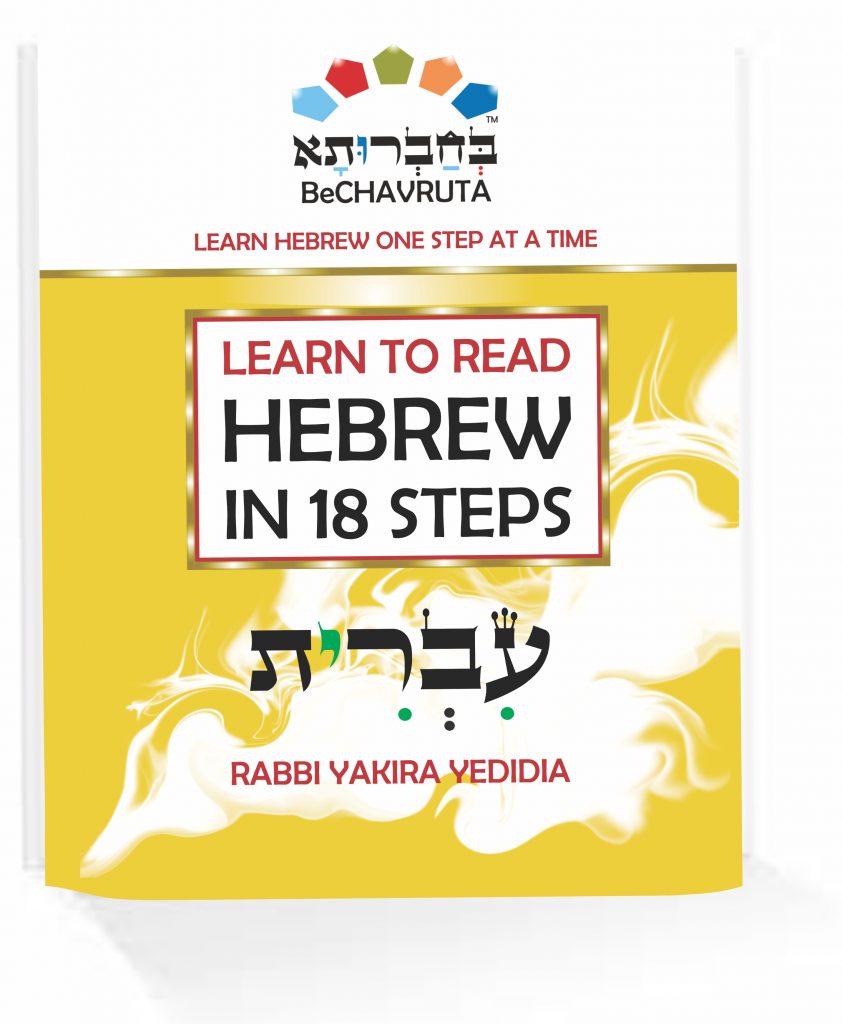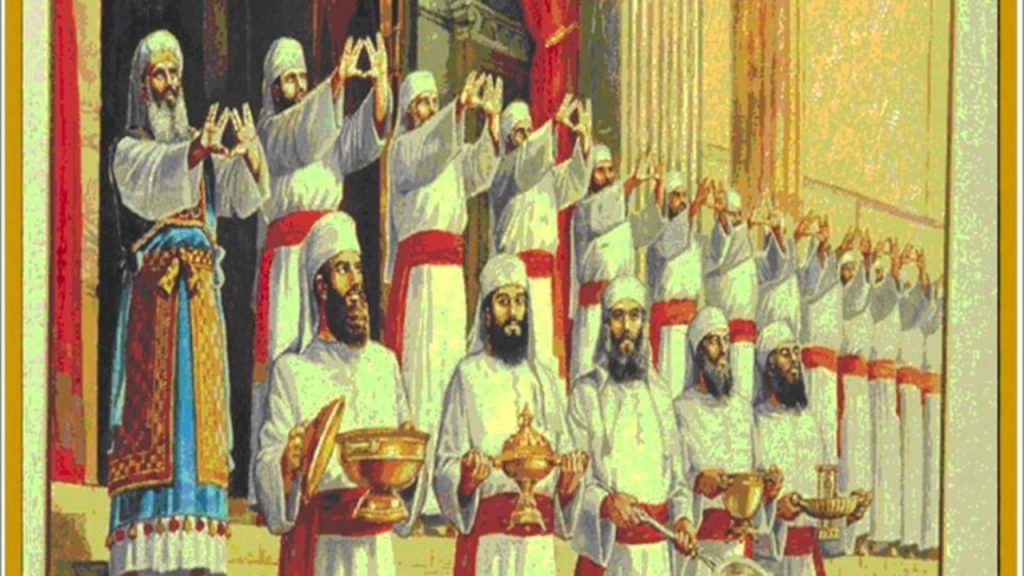Is the saying: “life is about the journey, not the destination”, denies the significance of destination?
Does it encourages us to embrace the ‘anything goes’ attitude, allowing ourselves to relax, and to be aimless?
All of humankind’s greatest wins happened when people prioritized their destination and did whatever it took to get there. Would we have invented the lightbulb had we subscribed to “life is about the journey, not the destination” philosophy? Our experiences and our failures are very important to our growth. But without a target, a plan or a goal, those experiences become meaningless.
In parashat Va’etchanan “and I pleaded,” Mosheh is speaking to the Israelites just before he dies and they are to enter the land of Israel, recalls the occasion on which he begged God to allow him to enter the land, and was denied. After everything he has done, he is denied the request to see the land to which he has been leading his people for the last forty years. True, there was that episode of the striking of the rock, was it really that bad to justify God’s refusal to let him enter the land? What about God’s forgiveness and mercy?
Mosheh describes the Exodus from Egypt and the Giving of the Torah, made arguments to obey the law, recounted setting up the Cities of Refuge, recited the Ten Commandments and the Shema, declaring the fundamentals of the Jewish faith: the unity of G‑d (“Hear O Israel: the L‑rd our G‑d, the L‑rd is one”); the mitzvot to love G‑d, to study His Torah, and to bind “these words” as tefillin on our arms and heads, and inscribe them in the mezuzot affixed on the doorposts of our homes. and gave instructions for the Israelites’ conquest of the Land.
שְׁמַע ׀ יִשְׂרָאֵל, יְיָ ׀ אֱלֹהֵֽינוּ, יְיָ ׀ אֶחָד
וְאָהַבְתָּ אֵת יְיָ ׀ אֱלֹהֶֽיךָ, בְּכָל ׀ לְבָבְךָ, וּבְכָל נַפְשְׁךָ, וּבְכָל מְאֹדֶֽךָ. וְהָיוּ הַדְּבָרִים הָאֵֽלֶּה, אֲשֶׁר ׀ אָנֹכִי מְצַוְּךָ הַיּוֹם, עַל ׀ לְבָבֶֽךָ. וְשִׁנַּנְתָּם לְבָנֶֽיךָ, וְדִבַּרְתָּ בָּם, בְּשִׁבְתְּךָ בְּבֵיתֶֽךָ, וּבְלֶכְתְּךָ בַדֶּֽרֶךְ, וּבְשָׁכְבְּךָ, וּבְקוּמֶֽךָ. וּקְשַׁרְתָּם לְאוֹת ׀ עַל יָדֶֽךָ, וְהָיוּ לְטֹטָפֹת בֵּין ׀ עֵינֶֽיךָ. וּכְתַבְתָּם ׀ עַל מְזֻזוֹת בֵּיתֶֽךָ וּבִשְׁעָרֶֽיךָ
It is always read on the special Sabbath Shabbat Nachamu, the Sabbath immediately after Tisha B’Av. As the parashah describes how the Israelites would sin and be banished from the Land of Israel, Jews also read part of the parashah Deuteronomy 4:25–40 as the Torah reading for the morning (Shacharit) prayer service on Tisha B’Av, which commemorates the destruction of both the First Temple and Second Temple in Jerusalem.
What if life is a series of destinations? Can one be motivated if not facing forward to new possibilities, achievements and expanding into one’s own unmet potential.
Look at our life. Aren’t we always ‘on the way to somewhere’? always having another great distance to cross. Looking at the horizon where we hope to eventually be, and never at the ground beneath our feet. And thank God, it never ends. The path we took leads us to a hundred more, as the process of discovery is a life long.
Sometimes I wonder, is Life is about the destination? Is Life is about the journey? or is Life is about both the destination, and the journey? Is the Land of milk and honey is only a physical place or a spiritual one as well? Striving, on a daily basis, to reach our own Promised Land.
Kol Tuv.

ORDER RABBI YAKIRA NEW BOOK “LEARN TO READ HEBREW IN 18 STEPS”
12 Mitzvot in Parashat Vaetchanen
| 1. Not to desire another’s possession Deut. 5:18 2. To know that He is One Deut. 6:4 3. To love Him Deut. 6:5 4. To learn Torah Deut. 6:7 5. To say the Shema twice daily Deut. 6:7 6. To wear tefillin (phylacteries) on the head Deut. 6:8 7. To bind tefillin on the arm Deut. 6:8 8. To put a mezuzah on each door post Deut. 6:9 9. Not to test the prophet unduly Deut. 6:16 10. Not to make a covenant with idolaters Deut. 7:2 11. Not to show favor to them Deut. 7:2 12. Not to marry non-Jews Deut. 7:31. | ||
The 613 Mitzvot
The commandment of the tzitzit. The word tzitzit is related to the root word lehatzitz- to look, therefore a tzitzit is an object at which we look . In addition, the word tzitzit numerical value is 600. The tzitzit has 8 threads and 5 double knots in each corner (8+5=13), thus a tzitzit represents the 613 mitzvot in the Torah.
In The Torah there are 613 commandments, mitzvot, also known as the Law of Moses (תרי״ג מצוות, taryag mitzvot). The 613 mitzvot are first recorded in the 3rd century CE, when Rabbi Simlai mentioned it in a sermon that is recorded in Talmud Makkot 23b.
The 613 commandments include 248 “positive commandments”, to perform an act (mitzvot aseh), and 365 “negative commandments”, to abstain from certain acts (mitzvot lo taaseh). The negative commandments number 365, which coincides with the number of days in the solar year, and the positive commandments number 248, a number ascribed to the number of bones and main organs in the human body.
Though the number 613 is mentioned in the Talmud, its real significance increased in later medieval rabbinic literature, including many works listing or arranged by the mitzvot. The most famous of these was an enumeration of the 613 commandments by Maimonides, The Rambam.
Many of the mitzvot cannot be observed now, following the destruction of the Second Temple, although they still retain religious significance. According to one standard reckoning, there are 77 positive and 194 negative commandments that can be observed today, of which there are 26 commands that apply only within the Land of Israel. Furthermore, there are some time-related commandments from which women are exempt (examples include shofar, sukkah, lulav, tzitzit and tefillin). Some depend on the special status of a person in Judaism (such as kohanim), while others apply only to men or only to women. According to Rambam Organized by Parshah. based on Wikipedia and http://www.vaadrv.org/rambam613mitzvot.asp ONE BIG IMPORTANT NOTE WHEN USING THIS LISTING: This listing is not all inclusive. Rambam may site multiple sources for a mitzvah is his works but this list currently only gives one source for each mitzvah.
WOULD YOU LIKE TO READ HEBREW?
THE BEST TIME TO PLANT A TREE WAS 20 YEARS AGO. THE SECOND BEST TIME IS NOW!
Take your first step, and in as little as 9 hours of BeCHAVRUTA Crash Course Book, you will be able to Read Hebrew Fluently & Accurately like a Pro!

ORDER RABBI YAKIRA NEW BOOK “LEARN TO READ HEBREW IN 18 STEPS”
“Original, fun, and effective, this is a superb way to learn to read Hebrew.“- DENNIS PRAGER
“A clear, lucid and immensely helpful guide to learning Hebrew. Takes the reader by the hand and introduces the holy tongue in living color.“-RABBI DAVID WOLPE
“An instant classic! Rabbi Yakira has written a primer on Hebrew that is both enchanting & colorful. It is sure to capture the interest of students & magically introduce them to the Hebrew language!”-RABBI DR DAVID ELLENSON
The Priestly Blessing
Check out YedidYah “The Priestly Blessing” Birkat Hakohanim. Music by Rabbi Yakira Yedidia https://youtu.be/YNE11QdEMN0
יְבָרֶכְךָ יהוה, וְיִשְׁמְרֶךָ- May the LORD bless you and guard you
יָאֵר יהוה פָּנָיו אֵלֶיךָ, וִיחֻנֶּךָּ -May the LORD make His face shed light upon you and be gracious unto you
יִשָּׂא יהוה פָּנָיו אֵלֶיךָ, וְיָשֵׂם לְךָ שָׁלוֹם- May the LORD lift up His face unto you and give you peace
Yevarechecha Adonai, V’Yishmerecha
Ya’er Adonai Panav Eleycha, ViChoneka
Yisa Adonai Panav Eleycha, V’Yasem Lecha Shalom
(Number 6:24-26).
Check out YedidYah “The Priestly Blessing” Birkat Hakohanim. Music by Rabbi Yakira Yedidia https://youtu.be/YNE11QdEMN0
Check out YedidYah Psalm 96 “Yiram Hayam” Music by Rabbi Yakira Yedidia https://youtu.be/aTBD4i9nvXw

This blog article was inspired by chabbad.org, Sefaria.org, Wikipedia.org,

